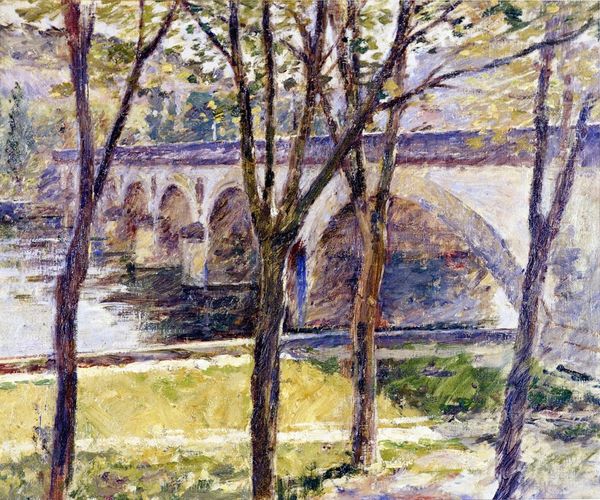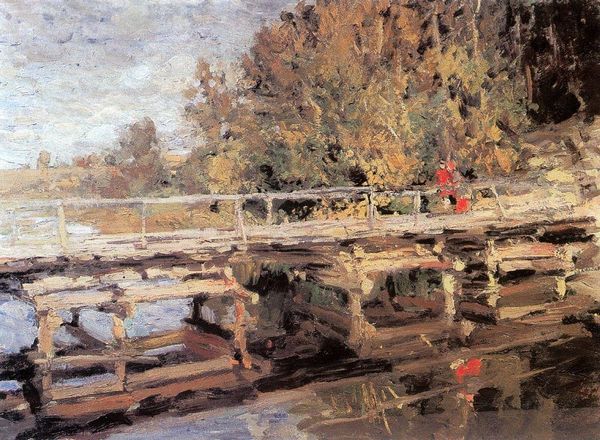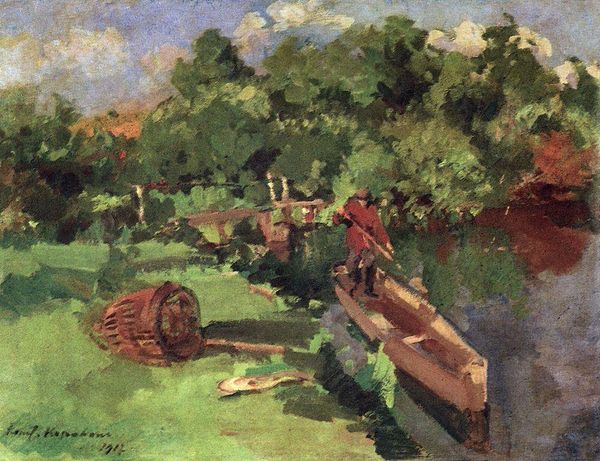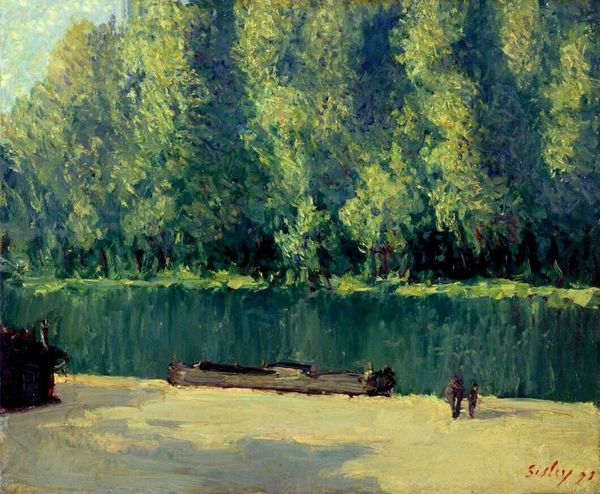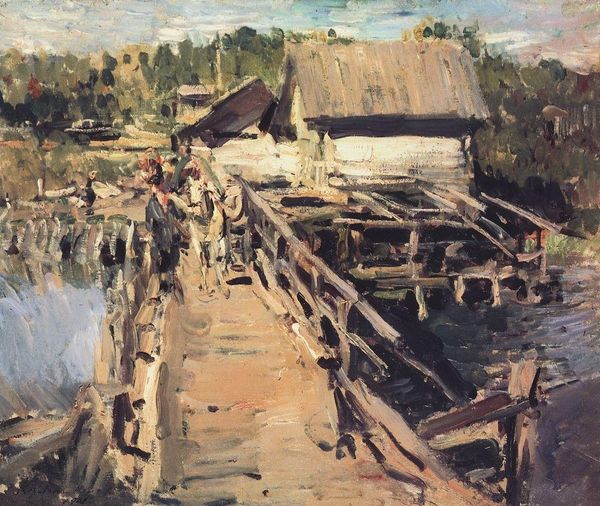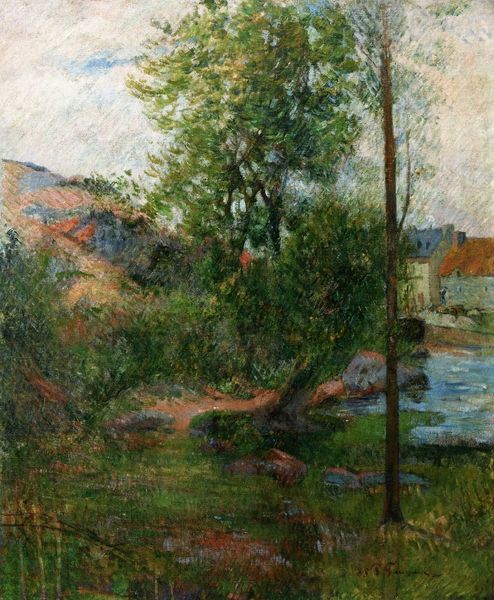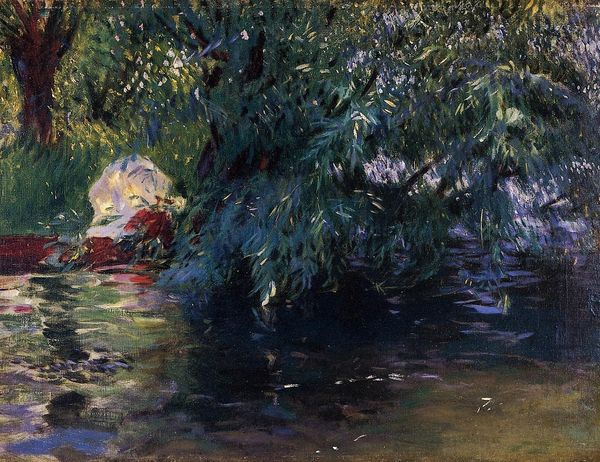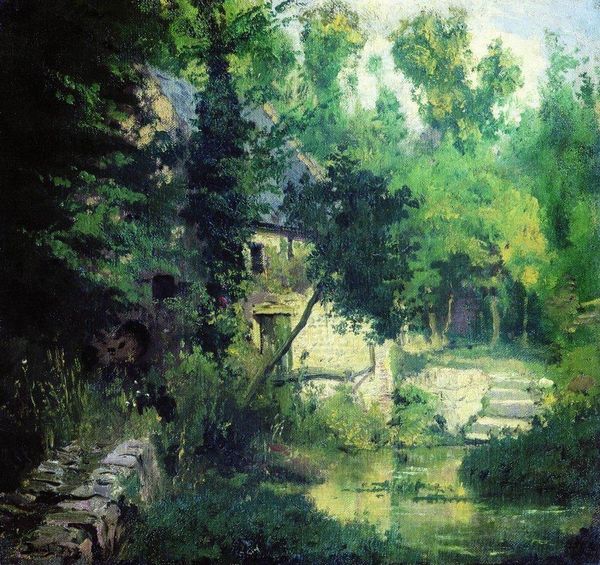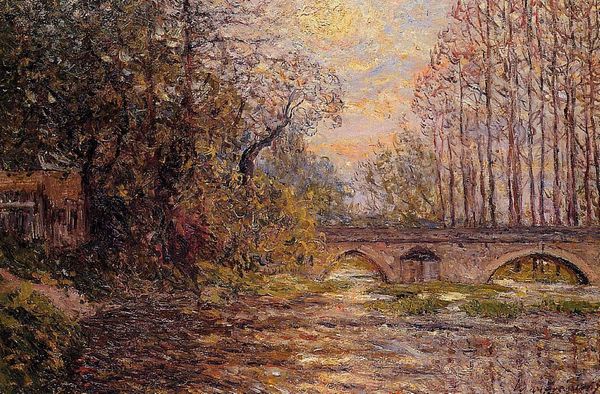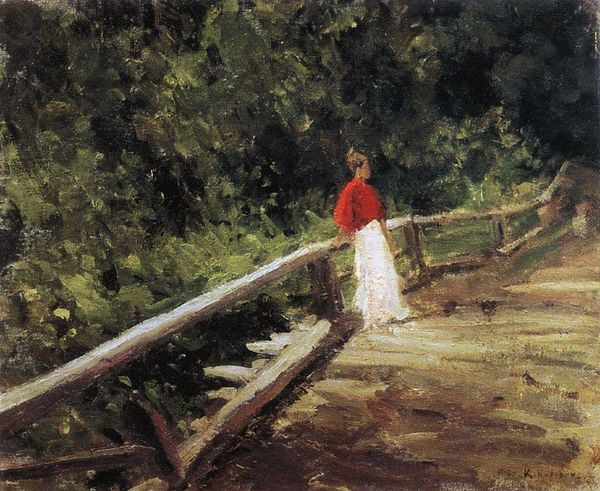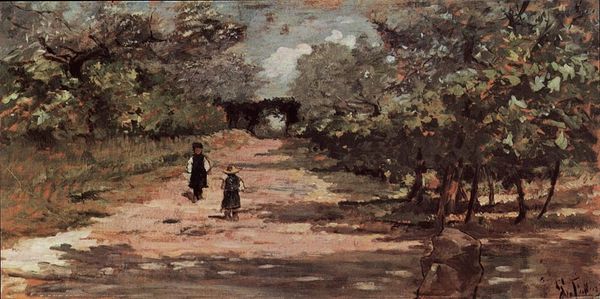
painting, oil-paint
#
portrait
#
painting
#
impressionism
#
impressionist painting style
#
oil-paint
#
landscape
#
oil painting
#
water
#
russian-avant-garde
#
genre-painting
Copyright: Public domain
Curator: Here we have a painting entitled "Bridge" by Konstantin Alexeevich Korovin. He was a prominent Russian Impressionist. Editor: It feels fleeting, a quick glance captured in paint. The dappled light, the sketch-like quality... there's something wonderfully transient about the scene. Curator: That immediacy is characteristic of Korovin. Impressionism offered him a way to engage with modern life and the changing urban and rural landscape in Russia, as it moved further towards the 20th century. He saw art's role as portraying life as he experienced it. Editor: Those figures on the bridge, perhaps a mother and children. Their forms are obscured, yet they seem to carry the weight of centuries. The bridge, you see, as a symbol of passage. It makes me think about connection and separation, but also fragility—that simple wooden structure juxtaposed with the deep time signified by water and earth. Curator: It’s interesting you say that because while the family appears traditional, even nostalgic, Korovin and other Russian artists like him were interested in challenging established norms, moving away from the academic style that had dominated for so long. His artistic stance had political implications, in that art should reflect and push the bounds of life rather than tradition. Editor: True, and while his loose brushwork reflects that avant-garde drive, his chosen imagery evokes timelessness. The colors here – the greens, browns and dabs of red – create an archetypal atmosphere of warmth and safety. This work reminds us how potent those rural idylls were in the broader Russian psyche. Curator: That’s a good point, that Korovin seems to have achieved the best of both worlds—modern engagement and familiar accessibility. His work certainly had widespread impact; other artists began to feel more liberated in how and what they wanted to paint and it helped steer Russian art onto new paths. Editor: Indeed, Korovin bridged the gap, as it were, for Russian art to cross over to its modern era. His light touch leaves a surprisingly lasting impression.
Comments
No comments
Be the first to comment and join the conversation on the ultimate creative platform.
